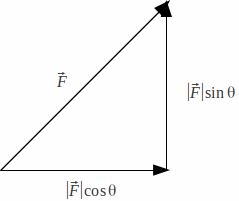Forces occur whenever the direction of motion of a body changes – it accelerates - or whenever an object changes shape. When a football is kicked for example, the ball may change shape slightly – temporarily – and will change direction – often towards the opposing goal.
A resultant force acting on a body free to move will always cause a change in velocity. Not every body is free to move. A body may be attached to some other body, then either the whole collection of attached bodies will move or there will be a deformation or a combination of both.
A force can only act on a single object. The description of the force should include:
the body on which it acts
its magnitude
its direction
the object that exerts the force
the nature of the force.
The origin of all ordinary everyday forces is either electromagnetic or gravitational The electric force especially often manifests as other forces - friction, normal reaction forces or tension. The reaction force between two surfaces for example is the result of repulsion between the electron clouds around surface atoms, and the tension in a wire when it is stretched is a result of the atoms in a wire being moved from the minimum of potential in the field created by surrounding atoms.
A force is a vector, and is shown as an arrow, in the direction of the force, with the length of the arrow proportional to the magnitude of the force. Importantly, forces can be added in a natural way, so the resultant of two forces is the vector sum of the forces laid end to end:

Often we wish to find the perpendicular components of a force, especially vertically and horizontally:

Forming equations involving the horizontal components and vertically components and also possibly taking moments about a point enables us to find unknown forces and predict the motion of a system.
